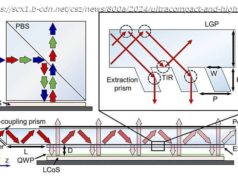Through giant lobes of gamma radiation, an international team of researchers have found a small satellite galaxy of the Milky Way filled with dark matter, but whose emissions are more likely the result of millisecond pulsars blasting out cosmic particles, reports a new study in Nature Astronomy.
September 11, 2022
Through giant lobes of gamma radiation, an international team of researchers have found a small satellite galaxy of the Milky Way filled with dark matter, but whose emissions are more likely the result of millisecond pulsars blasting out cosmic particles, reports a new study in Nature Astronomy.
The center of our galaxy is blowing a pair of colossal bubbles of gamma radiation (the magenta structures in figure 1) spanning 50,000 light-years across. Discovered with the Fermi Gamma-ray Space Telescope about 10 years ago, the source of this hourglass-shaped phenomenon has remained unclear.
Called Fermi bubbles, these lobes of radiation are patched with a few enigmatic substructures of very bright gamma-ray emission. One of the brightest spots, called the Fermi cocoon, is found in the southern lobe (magnified inset in figure 2) and was originally thought to be due to past outbursts from the Galaxy’s supermassive black hole.
An international team of researchers co-led by former Kavli Institute for the Physics and Mathematics of the Universe (Kavli IPMU) Project Researcher Oscar Macias (currently GRAPPA Fellow at the University of Amsterdam) and Australian National University Associate Professor Roland Crocker, and including Kavli IPMU Visiting Scientists Shunsaku Horiuchi and Shin’ichiro Ando, analyzed data from GAIA and Fermi space telescopes to reveal that the Fermi cocoon is actually due to emission from the Sagittarius dwarf galaxy.






